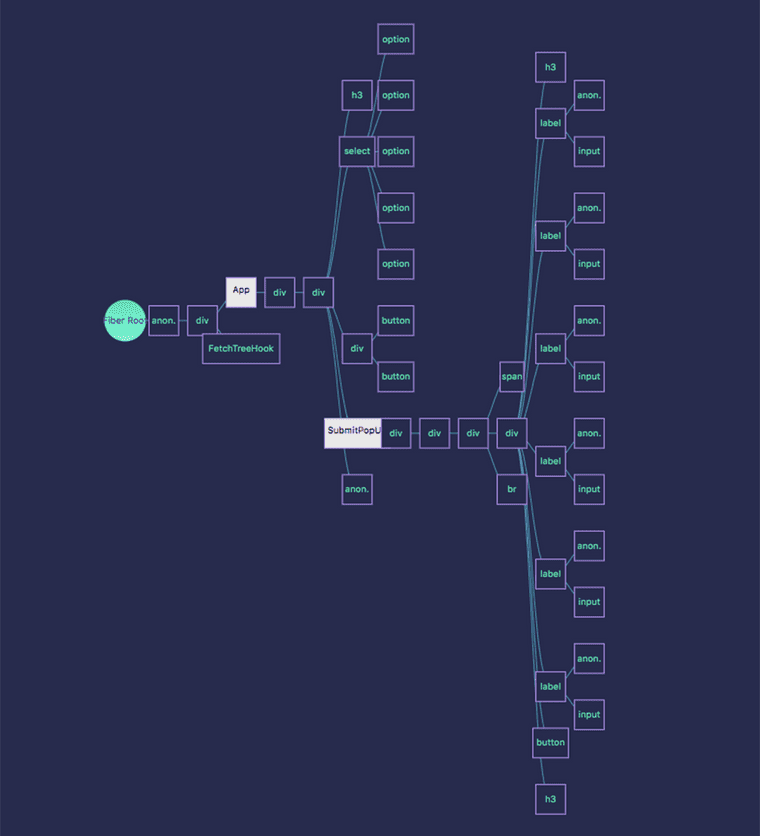Identify potential waterfalls and prevent them early
Too many data requests mean slow loading sites and suboptimal performance.
Seeing where your data requests are happening is the first step to streamlining requests and speeding up loading.
Visualize your React app structure
Get a clear view on the component tree and your app side-by-side in the browser with the React Tree Chrome Extension.
Easily see where data requests are within your components
Components that contain data requests are clearly highlighted in the tree visualization and the component store so you can see how it all fits together at a glance during development.
Here's to creating faster, more performant React applications the easy way.
Features
Zoom and pan over the component tree visualization.
Vertical and horizontal tree orientation options for visualization view.
See data requests in highlighted components on click.
Toggle between visualization and table view of data requests in components.
The Team
Trevor Carr
Software Engineer
Cara Dibdin
Software Engineer
James Ferrell
Software Engineer
Chris Lung
Software Engineer
Anika Mustafiz
Software Engineer









